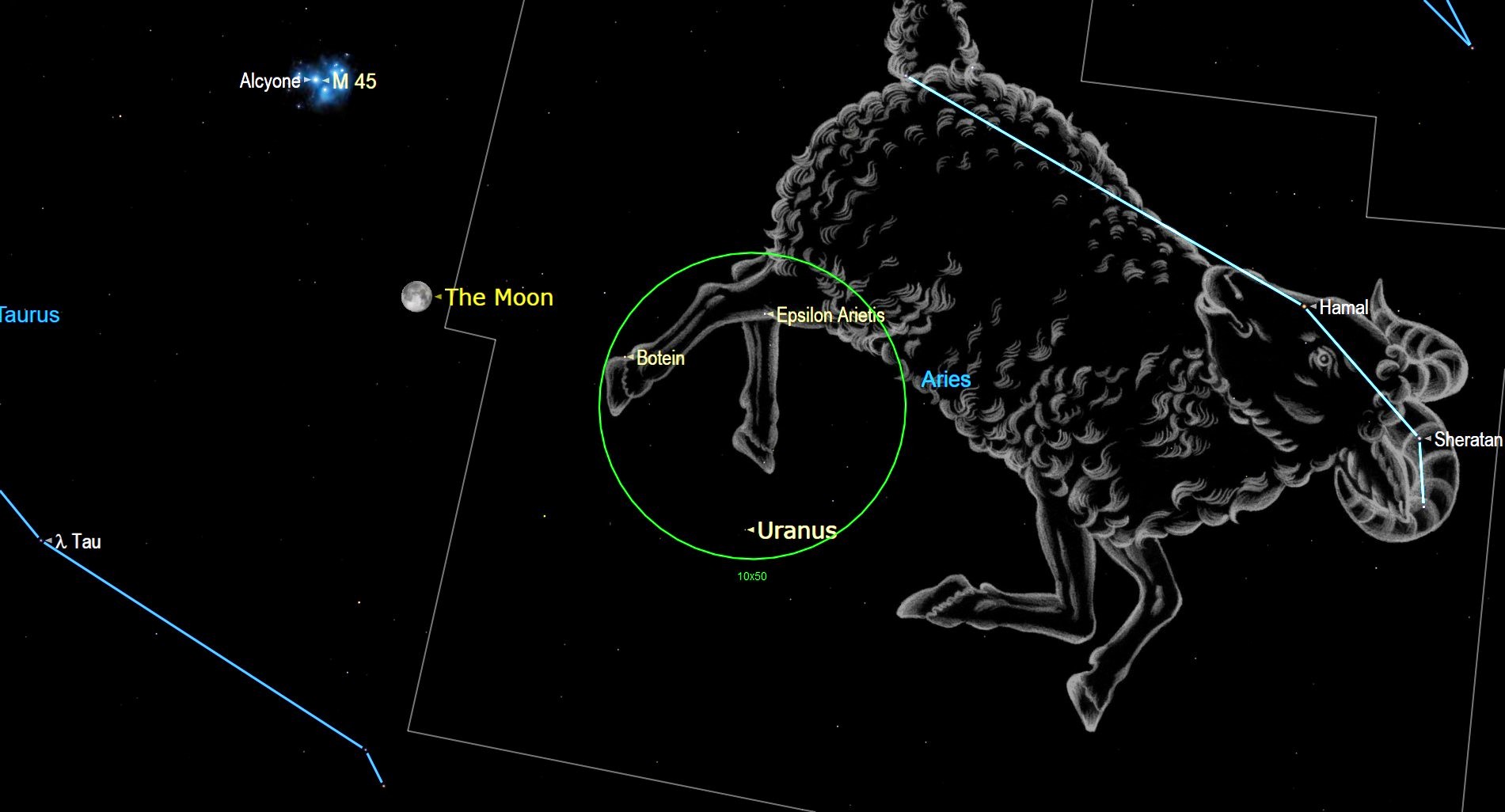Spot Uranus at opposition in the night sky Wednesday (Nov. 9)
The distant ice giant Uranus will be opposite the sun in the night sky this week.

On Wednesday, (Nov. 9), Uranus will move opposite the sun in an astronomical arrangement called 'opposition.' The distant ice giant and the seventh planet from our sun, Uranus will be visible for most of the night and will be at its highest point at around midnight.
For skywatchers in New York City, Uranus in opposition will begin at 6:33 p.m. EST (2333 GMT) according to In the Sky, when the ice giant will appear at 21 degrees over the eastern horizon in the constellation of Aries. (Remember: Your fist at arm's length corresponds to roughly 10 degrees.)
It will rise to 65 degrees over the southern horizon at 11:35 p.m. EST (0435 GMT on Nov. 10). Uranus at opposition will cease to be visible at 4:38 a.m. EST (0938 GMT) on Thursday (Nov. 10) when it sinks below 21 degrees on the western horizon.
Related: Night sky, November 2022: What you can see tonight [maps]
The arrangement between the two will begin at around 4:23 p.m. EST (2023 GMT) becoming visible over the sky of New York City in the evening at around 6:06 p.m. EST (2206 GMT) as the sky darkens, according to In The Sky.
The seventh planet from the sun, Uranus an ice giant composed mostly of a frigid mix of water, ammonia, and methane with the latter compound responsible for giving the planet its striking blue appearance.
At the same time Uranus reaches opposition it will also be making its closest approach to Earth, also known as its perigee. At this time, the solar system will be aligned in such a way that Uranus and Earth are on the same side of the sun. This means that the ice giant will be at its brightest in the night sky.
Breaking space news, the latest updates on rocket launches, skywatching events and more!
Though Uranus will appear slightly brighter at opposition, having a magnitude of around 5.7, it won't appear much larger in the sky, meaning it will only be visible in favorable viewing conditions with binoculars or a telescope as a tiny twinkling point of light.
This is because the ice giant is located at a tremendous distance from our planet, with Uranus dwelling at around 1.7 billion miles (2.8 billion kilometers) from Earth at the time of opposition.

Looking for a telescope to see the moon, Jupiter, or any other fascinating thing in the sky? We recommend the Celestron Astro Fi 102as the top pick in our best beginner's telescope guide.
This great distance from the inner solar system and the sun at its heart means that Uranus takes around 84 Earth years to complete an orbit. That means that ever since becoming the first planet to be discovered with the aid of a telescope in March 1781 by astronomer William Herschel, Uranus has completed less than three solar orbits.
Following this astronomical event during which time Uranus will be visible from sunset to sunrise, the planet will reach its highest point in the sky around 4 minutes earlier each subsequent night.
This will mean Uranus will gradually become less visible in the hours before dawn while still remaining visible in the evening for a few months.
The ice giant planet will next be in opposition facing the sun on Nov. 13, 2023.
Editor's Note: If you snap a photo of Uranus at opposition and would like to share it with Space.com's readers, send your photo(s), comments, and your name and location to spacephotos@space.com.
Follow us on Twitter @Spacedotcom or on Facebook.

Robert Lea is a science journalist in the U.K. whose articles have been published in Physics World, New Scientist, Astronomy Magazine, All About Space, Newsweek and ZME Science. He also writes about science communication for Elsevier and the European Journal of Physics. Rob holds a bachelor of science degree in physics and astronomy from the U.K.’s Open University. Follow him on Twitter @sciencef1rst.
